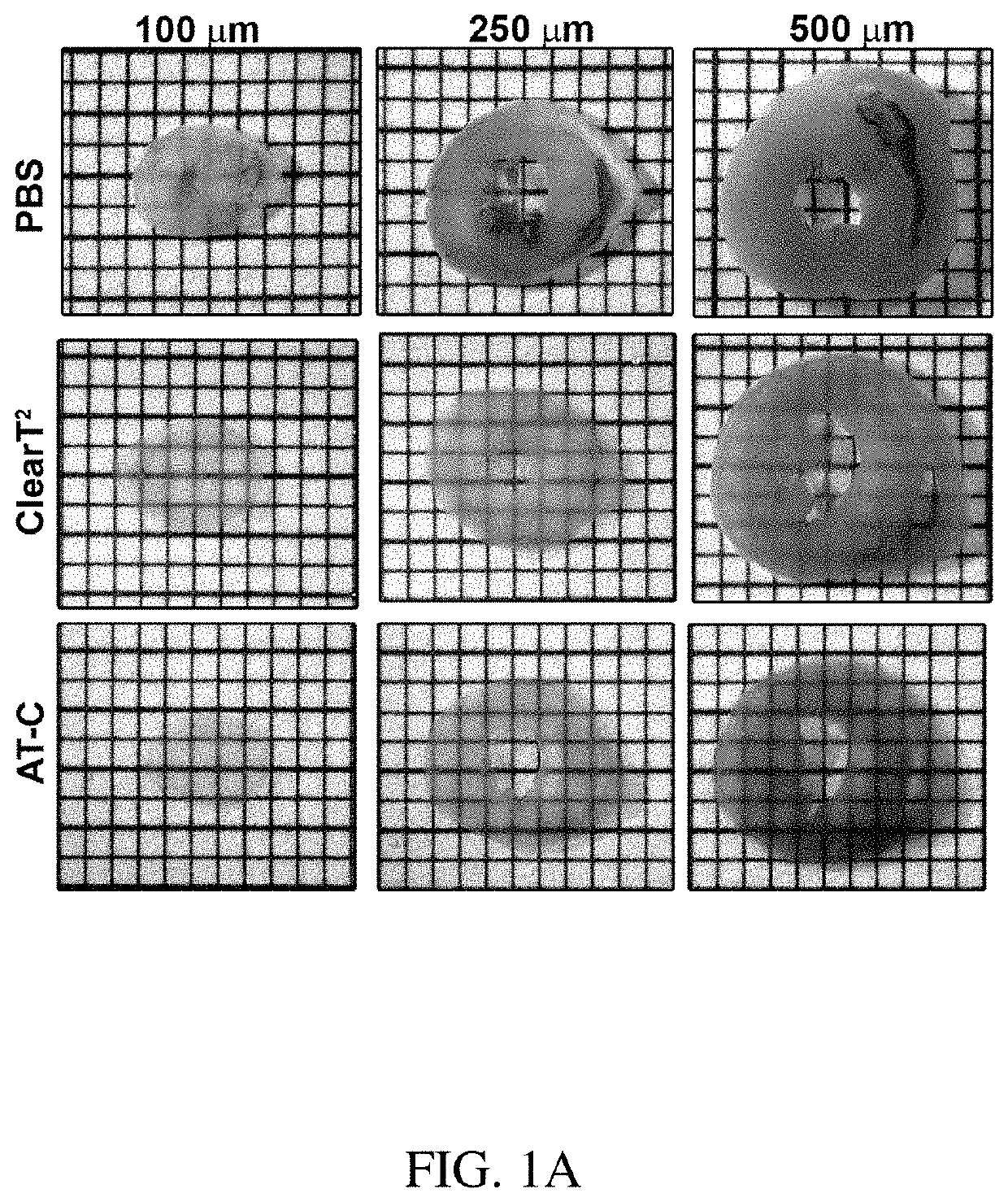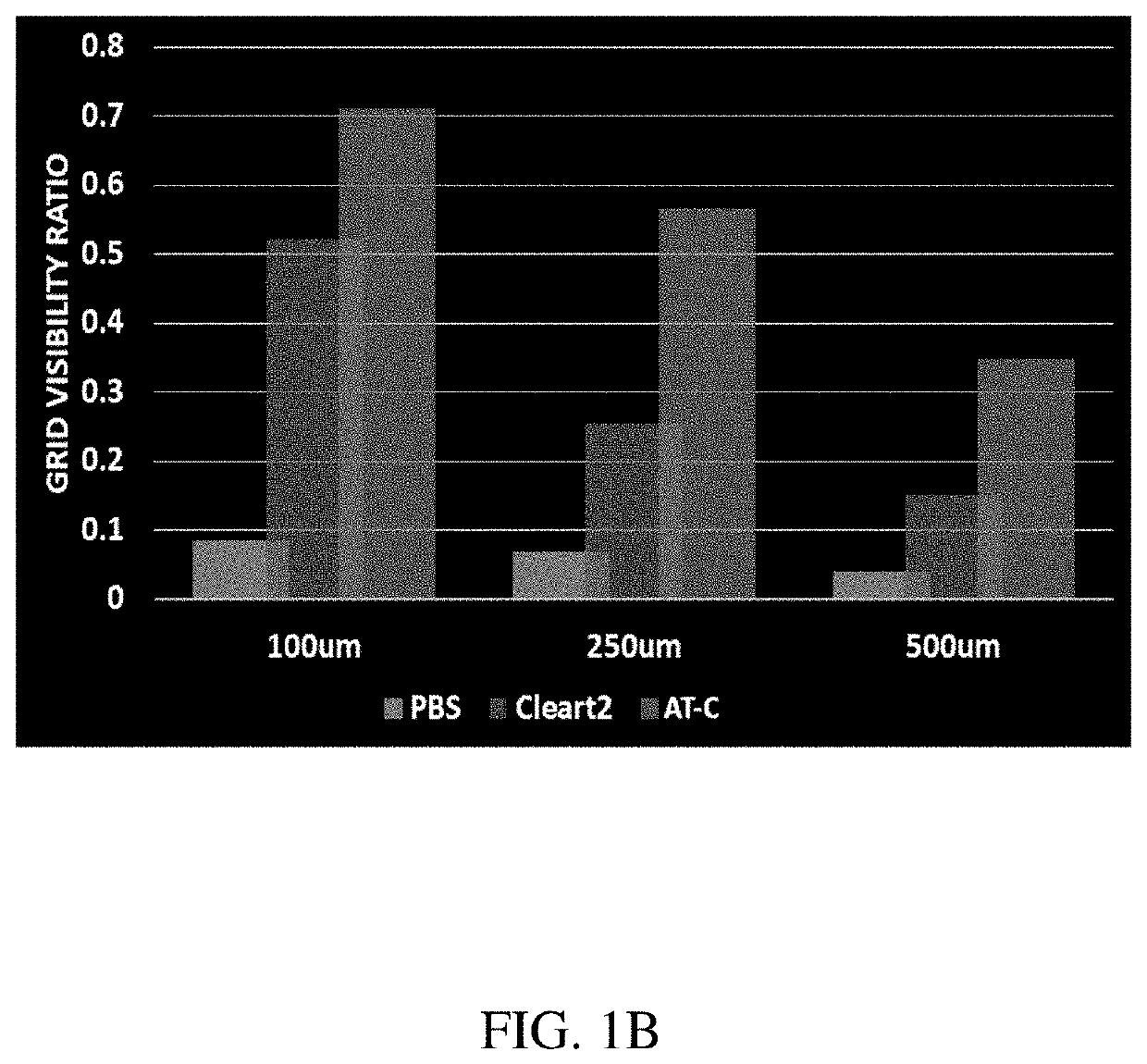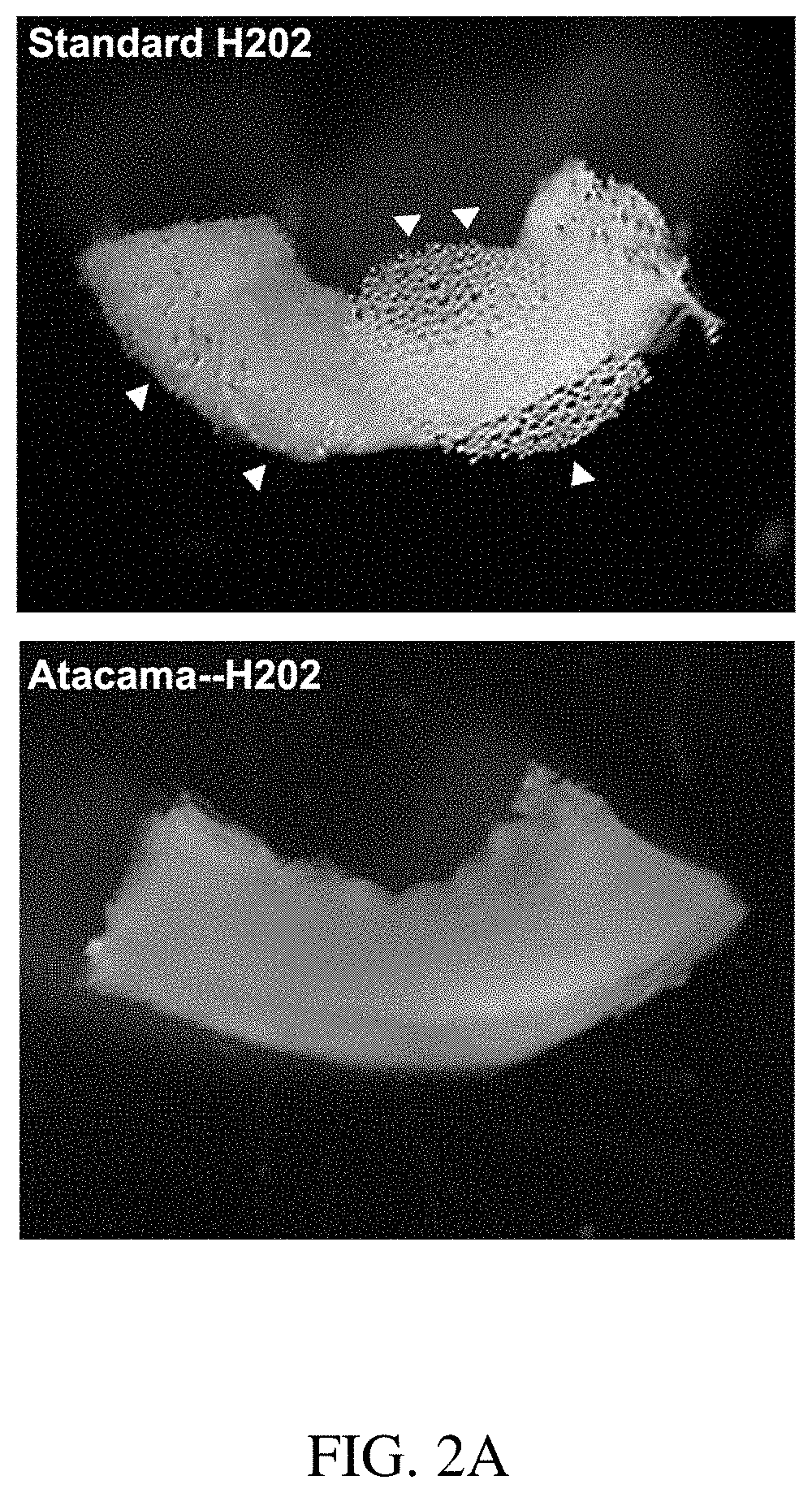Optical clearing and auto-fluorescence quenching solutions and method of use for enhanced microscopy imaging of biological tissues
a technology of autofluorescence and optical clearing, applied in the direction of optical elements, fluorescence/phosphorescence, instruments, etc., can solve the problems of limiting the depth of imaging using light microscopy techniques, unable to resolve the difference between background noise and signal using fluorescent light-based techniques, and unable to image intact organs. , to achieve the effect of reducing autofluorescence, enhancing resolution, and reducing autofluorescen
- Summary
- Abstract
- Description
- Claims
- Application Information
AI Technical Summary
Benefits of technology
Problems solved by technology
Method used
Image
Examples
examples
[0036]Synthesis of an Optical Clearing Solution (“Atacama Clear”)
[0037]The following solutions 1-6 were prepared using molecular grade formamide (e.g. Sigma #F7503, ≥99%) and glycerol (Avantor #5092, ≥99.5%), and with ultra-pure distilled water.
1) 30% Formamide in water
2) 30% Formamide, 10% glycerol, in water
3) 30% Formamide, 25% glycerol, in water
4) 30% Formamide, 50% glycerol, in water
5) 30% Formamide, 70% glycerol
6) 20% Formamide, 80% glycerol
[0038]Using Atacama Clear for Clearing Biological Tissue
[0039]For these studies, heart sections were used because muscle is the most difficult tissue to clear, due to its extensive fibrous cellular structure. Tissues were incubated in increasing grades of glycerol, starting with solution 1 and progressing to solution 6 of the Atacama Clear (AT-C) formulation. Time of incubation can be varied depending on how thick and tough the tissues are, and whether they are embryonic or adult. Smaller and less tough tissues, as well as embryonic tissues,...
PUM
| Property | Measurement | Unit |
|---|---|---|
| RI | aaaaa | aaaaa |
| RI | aaaaa | aaaaa |
| thickness | aaaaa | aaaaa |
Abstract
Description
Claims
Application Information
 Login to View More
Login to View More - R&D
- Intellectual Property
- Life Sciences
- Materials
- Tech Scout
- Unparalleled Data Quality
- Higher Quality Content
- 60% Fewer Hallucinations
Browse by: Latest US Patents, China's latest patents, Technical Efficacy Thesaurus, Application Domain, Technology Topic, Popular Technical Reports.
© 2025 PatSnap. All rights reserved.Legal|Privacy policy|Modern Slavery Act Transparency Statement|Sitemap|About US| Contact US: help@patsnap.com



